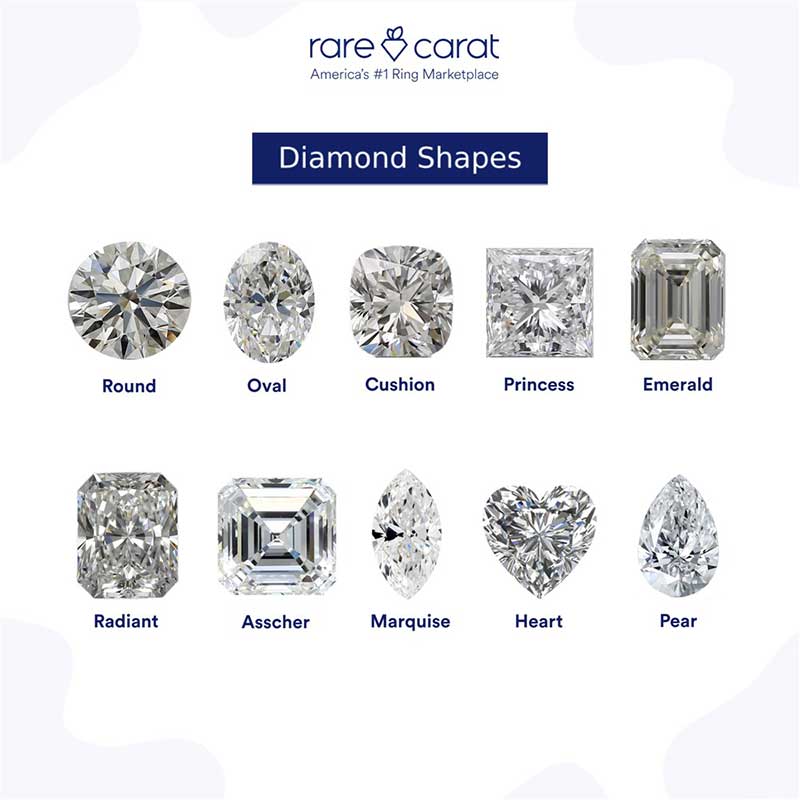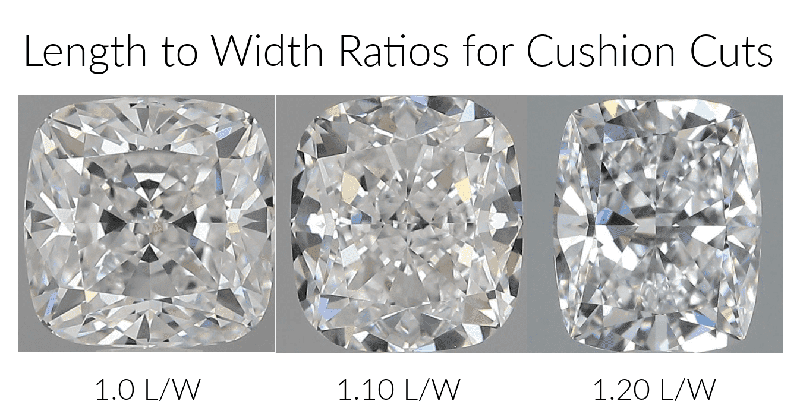Elongated Cushion Cut Diamonds | Rare Carat
A detailed guide on elongated cushion cut diamonds
- Elongated cushion cuts offer a fresh twist on classic diamond shapes
- Rectangles cover more finger than rounds at equal carat weight
- Prevents snagging on fabrics because of rounded corners
- Costs less than round brilliants with similar specs
- More fire than emerald cuts
- Each stone has unique proportions
Are you on the hunt for a dazzling diamond but tired of the same simple round shaped stones? Perhaps a twist on a classic shape, while still offering brilliance and charm, is what interests you? Well, if you have never considered an elongated cushion cut diamond before, then maybe it is time you do! I will explain everything - shape vs. cut, what an elongated cushion cut diamond is, and the pros and cons of diamonds with this stunning shape. I am such a big fan of the elongated cushion cut and I think by the end of this article you will be too!

Shape vs. Cut
To clear up any confusion (now or in the future) we have to talk about the difference between shape vs. cut of a diamond. When discussing diamond shapes, most of us will use both words interchangeably - and that is totally fine! In fact, sometimes it makes more sense to refer to the diamond’s shape as its cut, like a princess cut diamond vs. a square shaped diamond (which are the same silhouette but “square shaped” verbiage is just used less often). Technically however, there is an actual difference between the shape and the cut of a gem…
Shape

The shape of the diamond is pretty straightforward since it is literally what we see. This is not only one of the first things we notice about a stone, but the silhouette essentially defines it. One of the first modern diamond cuts, and without a doubt the most in demand shape sold year after year, is the round brilliant cut. The history and love for these round gems is why round brilliants are considered the standard cut, with all other shaped diamonds being referred to as fancy cuts. Our most popular fancy cuts include oval, cushion, emerald, princess, asscher, pear, marquise, radiant, and heart shaped diamonds. I think it is worth noting that one of the biggest benefits of choosing a slightly less in demand diamond shape is that it can be more budget friendly than a round diamond of a similar size and quality. It is just like with everything else we already know in life - higher demand = higher prices!
For side-by-side size comparisons, view Rare Carat’s diamond engagement rings with elongated cushion stones.
Cut
So, unlike the easily recognizable shape of a gem, the cut of a diamond is one of the 4C value factors that a diamond’s quality is based off of. The cut grading scale ranges from excellent to poor and tells us how well the rough, raw diamond was cut into the finished stone we see. There are proportions and angles and symmetry components involved in cutting that are surprisingly crucial to the visual appeal of diamonds. Without the proper cuts, the light that enters the diamond will not be able to happily bounce around or reflect back at us like normal - which means the stone can appear dull and hazy, be weirdly grayish in color, or even have strange optical illusions (like a fish-eye).

An interesting fact about the cut grading scale is that it was originally created for round diamonds specifically. After tons of research and field work, some smart people figured out the exact measurements needed for excellent cut stones. These detailed numbers have also made it much easier for manufacturers to know how to cut their diamonds precisely for optimum quality and value. However...currently our fancy shaped diamonds do not have the same clearly defined dimensions to be cut or graded on. Because of all the variations possible, these gems are looked at for more of an overall visual appeal (which can sometimes be left up to personal preference). Cut grades for fancy shaped diamonds should be used as more of a guideline for this reason - you could love the odd shape or look of a diamond that someone else might find less exciting. And when it comes to diamonds, whatever you love is perfect!
What is an elongated cushion cut diamond?

As I mentioned earlier, the cushion cut is one of the more popular fancy shapes of diamond. This shape is basically square-ish, sometimes with straight sides and sometimes with slightly bowed sides, but always with cut corners - kind of like the typical looking couch cushion (and thus the name!).
When a cushion cut has more of a stretched or rectangular shape, it becomes an elongated cushion cut diamond. I love an elongated cushion cut not only because of the multiple facets cut into the stone, creating fantastic brilliance (this is different than the typical emerald cut with linear facets that sparkle slightly less) but also because you still get the same finger coverage of an extended rectangular shaped stone. This means if you had the same sized round and elongated cushion cut diamond on your finger, the elongated cushion cut would take up more finger space and appear larger! And how could a bigger looking diamond ever be a bad thing!?
There is one important detail you will want to pay attention to with this cut - the length to width ratio. Like before, there is no right or wrong measurement here but instead this is basically a personal preference call. For instance- a 2:1 ratio might be too long and skinny, while a 1:1.25 ratio can be too short and stubby… it is all about looking at the diamond yourself before buying!
Pros and Cons of elongated cushion cut diamonds
Whether you are deciding on a diamond shape, new shoes, or new relationship, weighing your pros and cons is always important! Here is my short list for elongated cushion cut diamonds…
Pros
- Less expensive: than a round brilliant cut of a similar size and quality.
- More unique look: than some of the other standard diamond shapes.
- Looks bigger: on the finger than a circular shaped diamond of a similar size.
- No sharp corners: which means your diamond won’t unexpectedly snag on things.
Cons
- Can show inclusions, blemishes, and color easier: because elongated shapes have a bigger table (or top facet) that makes it harder for inclusions and such to hide.
- No official cut measurements: meaning each diamond’s dimensions will be different. Looking at your diamond personally will be very important in finding what you like.
- Sparkles slightly less: than a typical round cut… but is still more brilliant than an emerald cut!
Somewhere between the standard cushion shaped and emerald cut diamonds, we get this fun elongated cushion cut stone. The silhouette can feel like a subtle change up from those classic shapes we know, but the slight differences create a beautifully unique looking gem! If you want to try something new, or just searching for your favorite diamond shape in general - check out some elongated cushion cut diamonds (which I know you will love).

